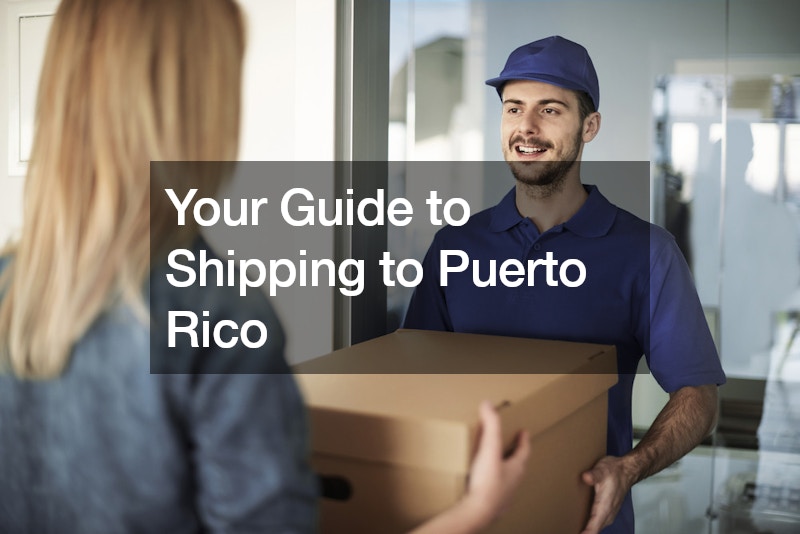Your Guide to Shipping to Puerto Rico


Puerto Rico, with its vibrant culture, beautiful beaches, and rich history, is a popular destination for both tourists and businesses alike. Whether you’re sending personal items, fulfilling orders for customers, or relocating to this enchanting island territory, understanding the nuances of shipping to Puerto Rico is essential for a smooth and successful experience. From choosing the right shipping methods to navigating customs regulations and delivery options, this guide will provide you with all the information you need to ship to Puerto Rico effectively.
1. Selecting the Right Shipping Method and Carrier
When shipping to Puerto Rico, it’s crucial to choose the appropriate shipping method and carrier for your needs. Major carriers like UPS, FedEx, and USPS offer service to the island, but it’s essential to research their delivery options, transit times, and pricing.
Additionally, consider using freight forwarding companies specializing in Puerto Rico shipments, especially for larger or bulkier items. These companies have expertise in navigating the unique challenges of shipping to the island and can provide tailored solutions to meet your requirements.
2. Understanding Transit Times and Delays
Shipping to Puerto Rico may involve longer transit times compared to domestic shipments due to its location in the Caribbean Sea. Factors such as weather conditions, seasonal variations, and logistical constraints can also impact delivery schedules. It’s essential to factor in these potential delays when planning shipments to Puerto Rico and communicate realistic expectations with recipients or customers. Tracking packages and staying informed about any service alerts or weather-related disruptions can help mitigate delays and ensure timely delivery.
3. Packaging and Protection
Puerto Rico’s tropical climate and oceanic environment pose unique challenges for package integrity during transit. Proper packaging and protection are essential to safeguard shipments against rough handling, moisture, and temperature fluctuations. Use sturdy boxes, padding, and sealing materials to ensure that items are securely packaged for the journey. Consider investing in waterproof packaging or protective wraps for added protection, especially for items susceptible to damage from humidity or saltwater exposure.
4. Navigating Customs Regulations
Like shipping to any international destination, sending goods to Puerto Rico requires compliance with customs regulations and documentation requirements. Although Puerto Rico is a U.S. territory, shipments from international locations may still require customs clearance and proper documentation. Ensure that all necessary customs forms, invoices, and permits are accurately completed and attached to the shipment to prevent delays or issues at customs checkpoints. Working with experienced customs brokers or freight forwarders can streamline the clearance process and ensure compliance with regulations.
5. Exploring Delivery Options
Puerto Rico’s diverse geography, consisting of urban centers, rural areas, and remote islands, presents various delivery options and challenges. While major carriers offer service to the primary cities like San Juan, delivery to more remote or rural areas may require additional considerations. Verify delivery options and service availability with carriers or freight forwarders in advance, especially if shipping to less accessible locations. Consider utilizing local delivery services or courier companies familiar with Puerto Rico’s unique landscape to ensure prompt and reliable delivery to your desired destination.
6. Considering Environmental Impact
In addition to logistical and regulatory considerations, it’s essential to be mindful of the environmental impact of shipping to Puerto Rico. Long-distance shipping can contribute to carbon emissions and environmental degradation, particularly when utilizing air or sea freight. Explore eco-friendly shipping options and practices to minimize your carbon footprint and support sustainability efforts. Consolidate shipments, optimize packaging to reduce waste, and choose carriers with a commitment to environmental stewardship. Supporting local businesses and sourcing products locally whenever possible can further reduce the environmental impact of shipping to Puerto Rico.
7. Planning for Seasonal Variations
Seasonal variations, such as hurricane season and peak tourism periods, can affect shipping conditions and transit times to Puerto Rico. June to November is the Atlantic hurricane season, and while Puerto Rico has robust infrastructure, severe weather events can disrupt transportation networks and cause delays. Plan shipments accordingly, avoiding peak periods and adverse weather conditions whenever possible. Stay informed about seasonal trends and weather forecasts to make informed decisions and mitigate risks associated with shipping to Puerto Rico.
In conclusion, shipping to Puerto Rico requires careful planning, preparation, and consideration of various factors unique to the island territory. By choosing the right shipping methods and carriers, understanding transit times and potential delays, prioritizing packaging and protection, navigating customs regulations, exploring delivery options, considering environmental impact, and planning for seasonal variations, you can navigate the complexities of shipping to Puerto Rico with confidence. Whether you’re sending personal items, fulfilling orders for customers, or relocating to the island, keeping these key considerations in mind will help ensure a smooth and successful shipping experience to this beautiful Caribbean destination.
.



